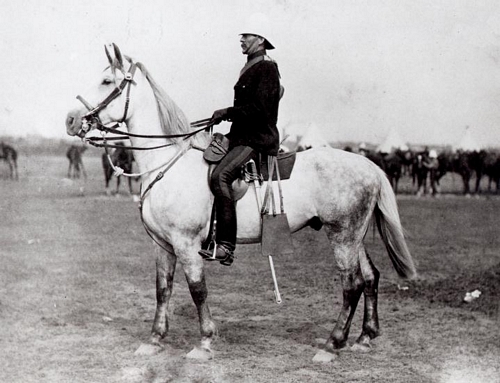Prepared by Neil B. Dukas
Summary
 In 1855, the United Province of Canada passed a Militia Act authorizing, amongst other things, 16 troops of cavalry to operate as part of the new Active Militia (later called "Class A"). The Active Militia was to be armed, equipped and trained at government expense with the intention that it would serve as an auxiliary to British Regulars garrisoning the province. It is to the passage of this act that most regiments in the Canadian Army Reserve trace their origins.
In 1855, the United Province of Canada passed a Militia Act authorizing, amongst other things, 16 troops of cavalry to operate as part of the new Active Militia (later called "Class A"). The Active Militia was to be armed, equipped and trained at government expense with the intention that it would serve as an auxiliary to British Regulars garrisoning the province. It is to the passage of this act that most regiments in the Canadian Army Reserve trace their origins.
Under the authority of the Militia Act of 1855, the 2nd Troop (or "No. 2 Troop"), Port Hope, Northumberland and Durham Squadron was established by Captain Robert Wallace Smart [a Post Master], on September 3, 1857. In 1881, the unit adopted the title "The Prince of Wales' Canadian Dragoons".
The PWCD were eventually amalgamated with The Prince of Wales Rangers (an infantry regiment headquartered in Peterborough) and then "reduced to nil strength" (i.e., removed from the active establishment) in 1970.
The lineage of the 3rd Provisional Regiment, The Prince of Wales' Canadian Dragoons
No. 2 Troop, Port Hope, Northumberland and Durham Squadron was established September 3, 1857 and headquartered in Cobourg. The Port Hope troop initially adopted the uniform of The 4th (Queen's Own) Light Dragoons, a British cavalry regiment. The troop is noted for having turned out on the occasion of the visit of the Prince of Wales in 1860.
Following Confederation, members of the Squadron re-mustered into Federal service, eventually adopting the uniform of the 13th Hussars.
On April 30, 1875, the Northumberland and Durham Squadron was granted "Regimental" status and re-titled the "3rd Provisional Regiment of Cavalry." The Regimental headquarters continued to operate out of Cobourg with squadrons located in Cobourg, Port Hope and Peterborough. The unit's founding officer, Captain R.W. Smart, was gazetted Brevet Lieutenant Colonel of the Regiment and served until his retirement in April 1877.
On October 14, 1881, the Regiment was re-designated (in characteristic Victorian superfluity) the "3rd Provisional Regiment of Cavalry, The Prince of Wales' Canadian Dragoons".
The term "Provisional" was dropped from the title in 1892.
On December 15, 1936 the PWCD were amalgamated with The Peterborough Rangers, an infantry regiment headquartered in Peterborough, and retitled The Prince of Wales Rangers. The PWR were eventually reorganized as a field artillery regiment - the 50th Field Artillery Regiment (The Prince Of Wales Rangers), RCA.
The 50th Field Artillery were "reduced to nil strength" and transferred to the Supplementary Order of Battle on 1 April 1970.
During their tenure as an Active Militia regiment, the PWCD (formerly the Northumberland and Durham Squadron) was supported by a number of prominent Port Hope families, including the Hagerman family, a veritable Upper Canada legal dynasty. Captain Volney Ashford, an employee of the Midland Railway of Canada, served in the Union Army prior to his service in the PWCD and later commanded the First Regiment, Hawaiian Volunteers.

Major George Hall, Commanding Officer
"C" Squadron, 3rd The Prince of Wales Canadian Dragoons
From the Herbert G. Mason Collection (PA-099788), Library & Archives Canada
Photograph provided by Neil Dukas
Primary source
Department of National Defence, Directorate of History and Heritage. Volume 3, Part 1: Armour, Artillery and Field Engineer Regiments - Artillery Regiments and Batteries - 50th Field Artillery Regiment (The Prince Of Wales Rangers), RCA
http://www.cmp-cpm.forces.gc.ca/dhh-dhp/his/ol-lo/vol-tom-3/par1/art/50far-eng.asp
Peter and Barbara Bolton - Port Hope, Ontario
www.alivingpast.ca